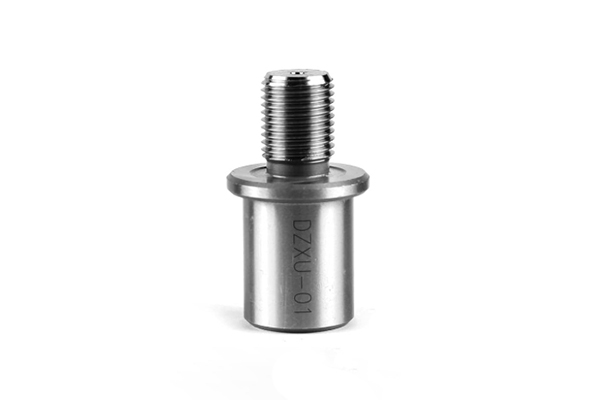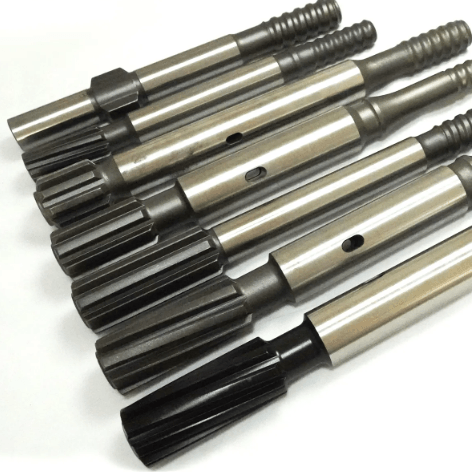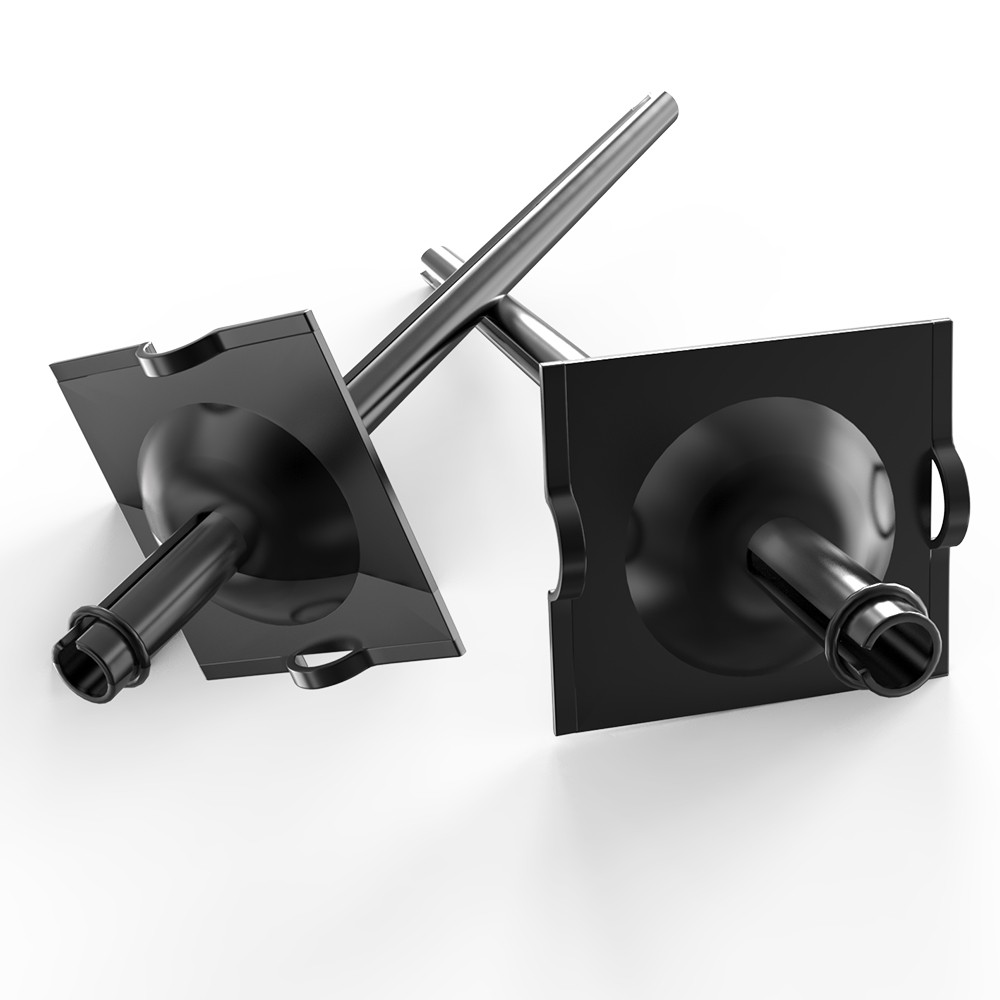As someone who has spent years in the manufacturing of drilling tools, I, Allen, have seen countless projects succeed or fail based on the quality and application of the right equipment. For procurement officers and business owners like Mark Davis in the USA, sourcing high-quality yet cost-effective tools is the cornerstone of profitability. This guide is for you. It’s designed to cut through the complex jargon and give you the practical knowledge you need to make informed purchasing decisions about annular cutters and their essential accessories. We will explore what makes these tools so efficient, how to choose the right ones for your inventory, and how to ensure you’re getting the best value, directly from a factory perspective.
What Exactly is an Annular Cutter and How Does it Differ from a Twist Drill Bit?
If you’re in the business of metal fabrication or heavy construction, you know that drilling holes is a daily task. For decades, the go-to tool has been the traditional twist drill bit. However, the annular cutter represents a significant leap forward in efficiency and precision. Imagine a standard drill bit as a tool that chews through all the material inside a hole, turning it into chips. This requires a lot of energy and time. An annular cutter, by contrast, is a hollow cylinder with multiple cutting teeth on its edge. It only cuts a ring, or “annulus,” of material on the periphery of the hole, leaving a solid core or “slug” that is ejected at the end of the process.
This fundamental difference in design brings several key advantages. Because the annular cutter removes less material, it requires less thrust and torque from the drill motor. This means you can use less powerful machines to drill larger diameter holes, or you can drill holes much faster with a standard mag drill. A twist drill has only two cutting edges, whereas a typical annular cutter can have anywhere from 4 to 16. More cutting edges distribute the load, leading to a smoother, cleaner hole with fewer burrs and a much longer tool life. Think of it as the difference between digging a trench with a spade versus a specialized trenching machine—both get the job done, but one is vastly more efficient.
Here’s a quick comparison:
| Feature | Twist Drill Bit | Annular Cutter |
|---|---|---|
| Cutting Action | Cuts the entire diameter | Cuts only the periphery |
| Speed | Slower | 3-4 times faster |
| Tool Life | Shorter | Longer (can be resharpened) |
| Hole Quality | Can be rough, may require reaming | Clean, precise, burr-free |
| Machine Power | Requires high torque and thrust | Requires less power |
| Core Material | Turns it into waste chips | Ejects a solid slug |
| Application | General-purpose drilling | Ideal for steel fabrication |
Why is High-Speed Steel (HSS) the Gold Standard for Annular Cutters?
The material a cutter is made from is just as important as its design. For most applications involving mild or carbon steel, aluminum, and other non-ferrous metals, High-Speed Steel (HSS) is the undisputed champion. HSS annular cutters offer a fantastic combination of toughness, wear resistance, and cost-effectiveness, which is a critical consideration for any procurement officer. This special alloy steel is designed to withstand the high temperatures generated during the cutting process without losing its hardness, or what we in the industry call “red hardness.”
An HSS annular cutter is not just a piece of steel; it’s a precisely engineered tool. During manufacturing, the HSS is heat-treated and often put through a hardening process to optimize its grain structure. This ensures the cutting edges remain sharp for a longer period, allowing you to drill hundreds of holes before needing a replacement or resharpening. While there are other materials, like tungsten carbide tipped (TCT) cutters for very hard metals, HSS provides the best balance of performance and price for the vast majority of jobs you’ll encounter in construction and fabrication. This makes hss annular cutters a staple in any well-stocked inventory.

What is a Weldon Shank and Why is it Crucial for Magnetic Drills?
The shank is the part of the drill tool that is clamped into the machine. While there are several types, the Weldon shank is the most common and widely accepted standard for annular cutters, especially for use in a magnetic drill or mag drill. A Weldon shank is easily identified by its one or more flat sides—typically two flats positioned 180 degrees apart. These flats are not just for show; they provide a secure surface for set screws in the machine’s arbor to lock onto.
This locking mechanism is incredibly important. It prevents the cutter from slipping or spinning within the holder under high torque, which is a common occurrence when drilling into thick steel. This positive clamping ensures maximum power transfer from the drill to the cutting edge, leading to a stable and efficient cutting operation. When you see products advertised as cutting diameter two flat hss slugger bits or diameter two flat hss slugger, they are referring to this industry-standard Weldon shank annular cutter system. It’s a simple, robust, and reliable design that has proven itself time and time again on job sites around the world.
How Do I Choose the Right Annular Cutter Diameter and Cutting Depth?
Choosing the correct annular cutter is a straightforward process, but it requires precision. The two most important dimensions you need to consider are the cutting diameter and the cutting depth. The diameter refers to the size of the hole you intend to drill. Annular cutters are available in a vast range of metric and imperial sizes, from as small as 1/2 inch (or 12mm) to over 6 inches (150mm). It’s crucial to select the exact diameter required by the project specifications to ensure a proper fit for bolts or other components.
The cutting depth determines how thick of a material the cutter can pass through in a single operation. Standard depths are typically 1 inch and 2 inches, but they are also available in 3-inch and even deeper options for specialized applications. For example, a cutter described as an inch weldon shank 1 cutting depth is designed to drill a hole through steel plate up to 1 inch thick. If your project requires drilling through a 1.5-inch thick I-beam, you would need to select a cutter with a 2-inch cutting depth. Always choose a cutting depth that slightly exceeds the thickness of your material to ensure a clean exit and full slug ejection.
Can I Use an Annular Cutter in a Standard Drill Press?
This is a question I hear often, especially from workshops that don’t have a dedicated magnetic drill press. The answer is a resounding yes, but with a crucial piece of equipment: a Weldon shank adapter. A standard drill press typically uses a Jacobs-style keyed chuck or a Morse Taper spindle, neither of which is designed to securely hold a Weldon shank annular cutter on its own. Attempting to clamp a Weldon shank directly into a three-jaw chuck is unsafe and will likely lead to slippage and damage to both the cutter and the chuck.
A cutter adapter, or weldon adapter, bridges this gap. This simple accessory has a Weldon shank bore on one end to hold the annular cutter (complete with set screws) and a straight or tapered shank on the other end that fits into your drill press. For instance, an arbor with an MT2 or MT3 (Morse Taper 2 or 3) shank will fit directly into the spindle of many common floor-standing drill press models. Using the correct adaptor ensures the cutter is held rigidly and concentrically, allowing you to leverage the speed and efficiency of an annular cutter with the machinery you already own. It’s a small investment that dramatically expands the capabilities of a standard drill press. We offer a comprehensive range of these essential Shank adapters to ensure compatibility across various machines.

What is the Critical Role of a Pilot Pin in Annular Cutting?
The pilot pin is a small but indispensable component of the annular cutter system. It might look simple, but it performs three vital functions that are essential for a successful drill operation. If you ever purchase an annular cutter set 13 pcs, you will notice it comes with several of these pins, and for good reason. Without the correct pilot pin, the entire system is compromised.
First, the pilot pin acts as a centering guide. Its spring-loaded, pointed tip allows you to precisely align the cutter with a pre-marked center point on your workpiece before the drill starts. This ensures the hole is drilled exactly where you need it. Second, and perhaps most importantly, the pilot pin facilitates internal lubrication. Most modern annular cutters are designed for coolant to be fed through the arbor and down through the center of the cutter. The pilot pin sits in this channel, and as it retracts during drilling, it allows the lubricant to flow directly to the cutting edges, reducing heat, friction, and extending the life of the tool. Finally, once the cut is complete, the spring-loaded pin forcefully ejects the metal slug from the center of the cutter, clearing it for the next hole.
When Do I Need a Weldon Shank Adapter or an Annular Cutter Extension?
We’ve already discussed the necessity of a weldon shank adapter for using an annular cutter in a machine with a standard chuck or Morse Taper spindle. To recap, this adaptor is the non-negotiable link that allows a drill press or even a large mill to safely and effectively use a Weldon shank annular cutter. The adapter fits the machine on one end and the cutter on the other, ensuring a rigid, no-slip connection. It’s the most common and essential accessory for anyone looking to expand their drilling capabilities without buying a new magnetic drill.
An annular cutter extension, on the other hand, solves a different problem: reach. There are times when a standard-length cutter simply can’t reach the area that needs to be drilled. This could be due to an obstruction or the need to drill a deep hole inside a pre-existing cavity. An extension is a rigid shaft that fits between the machine’s arbor and the annular cutter, effectively making the entire assembly longer. When sourcing an extension, it is critical to choose a heavy duty model made from high-quality steel. A flimsy extension will introduce wobble and vibration, leading to a poor-quality hole and potentially breaking the cutter.
How Can You Properly Use and Maintain Annular Cutters for Longevity?
As a manufacturer, I want my customers to get the most value out of our products. Proper use and maintenance are key to extending the life of your annular cutters and ensuring they perform safely and effectively. Buying a quality tool is the first step, but how you treat that tool determines its true lifespan. Overlooking these simple practices is like buying a high-performance car and never changing the oil.
Here are some best practices from the factory floor:
- Use the Right Speed: Different diameter cutters and materials require different RPMs. Larger cutters need slower speeds, while smaller cutters can run faster. Consult the manufacturer‘s chart.
- Apply Steady Feed Pressure: Don’t force the cutter through the steel. Let the tool do the work. A steady, consistent pressure yields the best results. You’ll know it’s right when you see long, curled chips coming off the workpiece.
- Always Use Lubricant: This is non-negotiable. Use a high-quality cutting fluid delivered through the pilot pin. It keeps the cutter cool, flushes away chips, and dramatically increases tool life.
- Inspect Before Each Use: Check the cutting teeth for any chips or dullness. A damaged cutter is inefficient and unsafe.
- Don’t “Plunge” a Spinning Cutter: Always bring the pilot pin into contact with the workpiece before starting the drill motor. This prevents the cutter from “walking” or chattering upon contact.
- Store Properly: Keep your cutters in a protective case to prevent them from knocking against other metal tools, which can chip the delicate cutting edges. An
annular cutter set 13 pcsusually comes in a durable case for this very reason.

What Should I Look for in a High-Quality Annular Cutter Set?
For a procurement professional, purchasing an annular cutter set, such as a kit for magnetic drill, is often more economical than buying individual cutters. However, not all sets are created equal. When evaluating a supplier, especially from overseas, there are several key indicators of quality you should look for to avoid the common pain points of inconsistent quality and fraudulent certifications.
First, examine the material and manufacturing. The cutters should be made from high-grade HSS or alloy steel, and the product description should be specific. Look for signs of precision grinding on the cutting faces and flutes. The geometry should be consistent across all cutters in the set. Second, check for certifications. As a factory, we proudly adhere to ISO 9001 standards, and we provide all necessary documentation. Never hesitate to ask for proof of certification. A reliable supplier will provide it without hesitation. Third, consider the completeness of the kit for magnetic drill. A good set will include a range of common diameter cutters (e.g., 1/2” to 1 1/8”), at least one or two pilot pins of the correct size, and a sturdy carrying case. These are not just bonuses; they are essential parts of a functional system. Whether you are looking for standard cutters or more specialized Rock Drilling Bits, the principles of quality verification remain the same.
How to Troubleshoot Common Issues with Annular Cutters and Magnetic Drills
Even with the best tools, problems can arise on the job site. Knowing how to quickly diagnose and solve them can save significant time and money, preventing project delays. As someone who understands these tools from the inside out, here are some of the most common issues and their likely solutions. This knowledge helps you support your customers and builds your reputation as a knowledgeable supplier.
- Problem: The annular cutter breaks or chips prematurely.
- Likely Cause: Excessive feed pressure is the number one culprit. The operator is pushing the drill too hard. Other causes include running the drill at too high an RPM for the cutter diameter, or a complete lack of cutting fluid.
- Solution: Reduce feed pressure and let the cutter‘s sharpness do the work. Check the machine’s speed settings and ensure a steady flow of lubricant.
- Problem: The drilled hole has a rough, chattered finish.
- Likely Cause: This usually indicates a dull cutter or vibration in the setup. A cutter that has lost its sharp edge will tear the metal rather than shear it. Vibration can come from a loose arbor, a non-rigid machine setup, or a worn-out drill press spindle.
- Solution: Inspect the cutter and replace or resharpen it if it’s dull. Ensure the mag drill has a solid hold on a clean, flat surface and that all components, from the arbor to the cutter, are securely tightened.
- Problem: The slug is not ejecting properly.
- Likely Cause: The pilot pin is either the wrong size, broken, or has lost its spring tension. It could also be that the hole is clogged with chips due to insufficient lubrication.
- Solution: Always use the correct pilot pin for the cutter‘s depth and diameter. Inspect the pin for damage and ensure it moves freely. Increase the flow of cutting fluid to help flush chips away.
- Problem: The cutter won’t fit in the machine’s arbor.
- Likely Cause: This is a simple case of incompatibility. The shank of the annular cutter (e.g., Weldon) does not match the machine’s holder.
- Solution: This is where having the right adaptor is critical. If you have a Weldon shank annular cutter and a drill press with a Jacobs chuck, you need the appropriate weldon shank adapter to make them fit. Sourcing a variety of high-quality tools, from Tapered drill pipe to simple adapters, is key to a complete inventory.
Key Takeaways for Your Business
Making the right purchasing decisions is about more than just price; it’s about understanding the technology and its application to ensure you’re supplying your customers with tools that deliver performance and value.
- Annular Cutters are Superior: For drilling in steel, annular cutters are faster, more efficient, and produce cleaner holes than traditional twist drill bits.
- Material Matters: HSS (High-Speed Steel) offers the best balance of performance and cost for most common drilling applications.
- Shanks and Adapters are Key: The Weldon shank is the industry standard for magnetic drills. For use in a standard drill press, a Weldon shank adapter is not optional—it’s essential for safety and performance.
- Don’t Forget the Details: The pilot pin is a critical component for centering, lubrication, and slug ejection. Always use the correct one.
- Quality is Verifiable: Partner with manufacturers who can provide proof of quality, such as ISO certifications, and who understand the nuances of the tools they produce.
- Maintenance is Profit: Educating your customers on proper tool use and maintenance extends tool life, builds loyalty, and reduces returns.
Post time: Aug-05-2025















